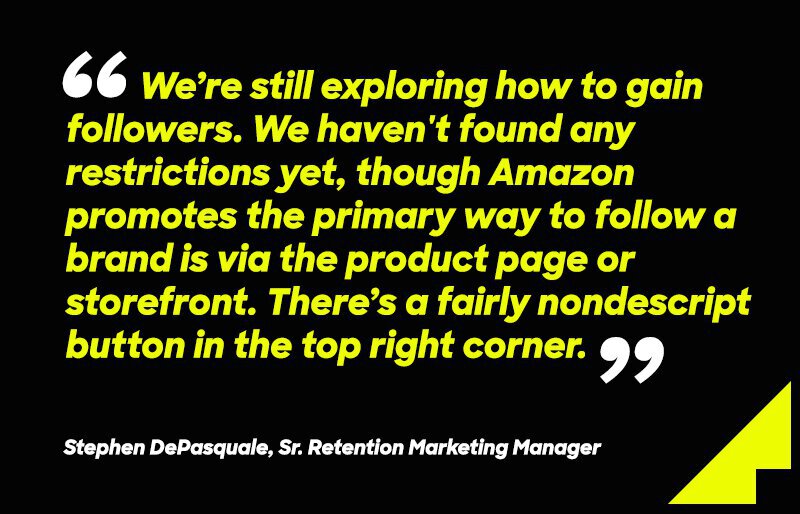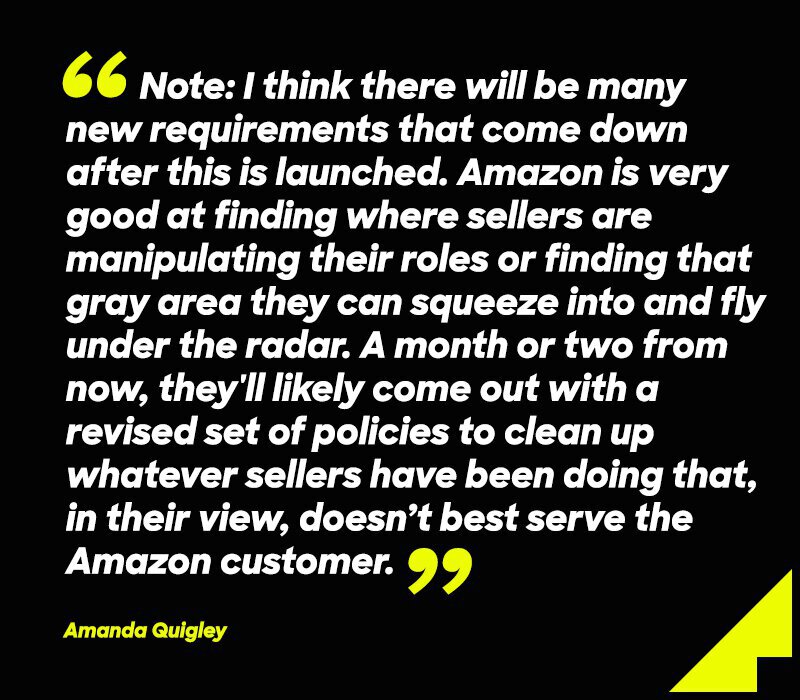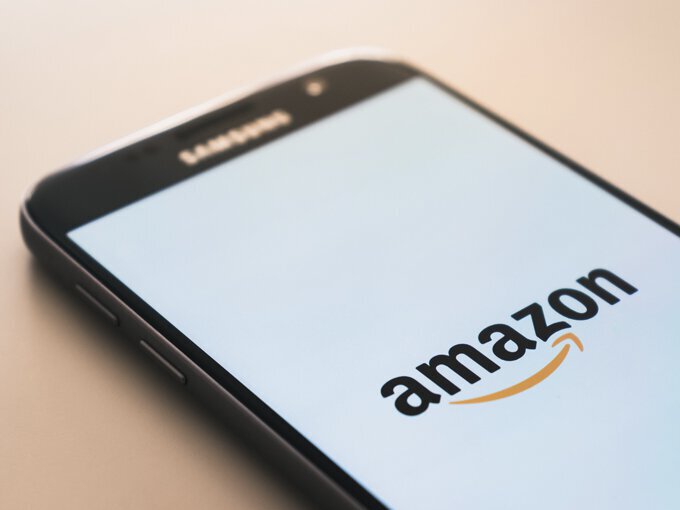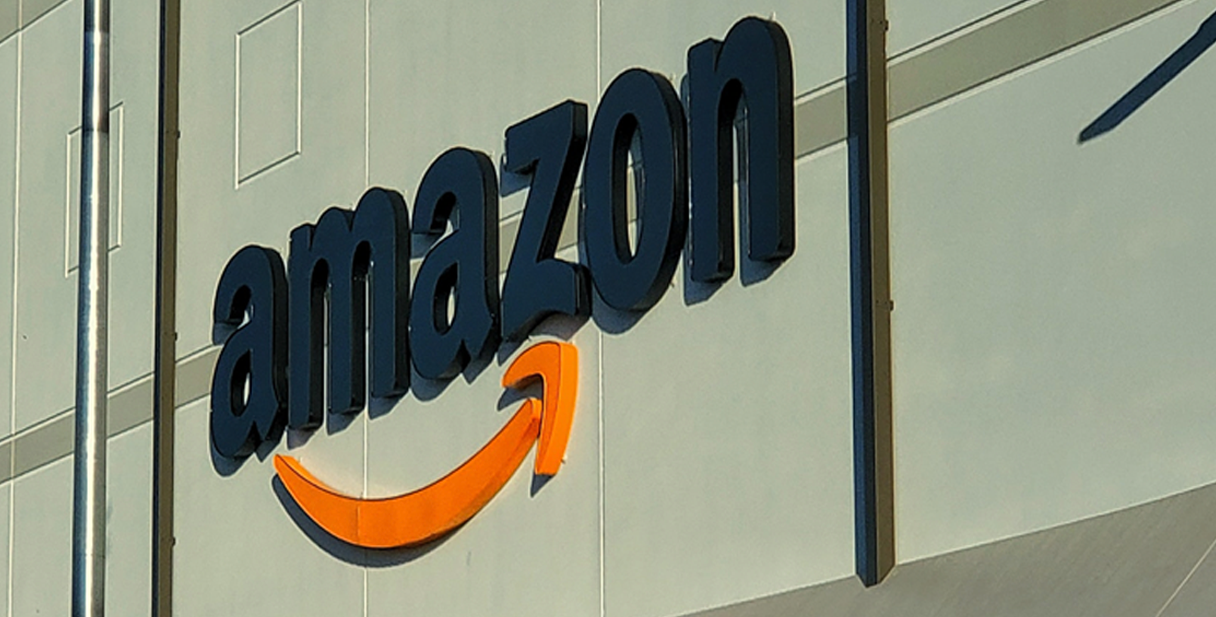Amazon’s New Customer Engagement Tool Q&A
May 12, 2021 Jenna Craig
Last week, Amazon announced a new customer engagement tool enabling FBA sellers to email customers who follow their brands.
I sat down with our lead counsel of revenue and brand protection, Amanda Quigley (i.e., master of all things Amazon TOS/compliance), and senior email marketing manager Stephen DePasquale (i.e., email wizard) to get their takes on the new tool.
What are your thoughts on this new amazon customer tool? I mean, it’s exciting that we’ll be able to connect with customers in a way we haven’t before. But what’s our first plan of attack?
Amanda: Until now, Amazon has been highly guarded about giving sellers a way to communicate with customers directly.
It’s an area of concern for sellers because they know that it’s a very fine line to walk. If you communicate with customers in the wrong way, Amazon can remove your messaging privileges, or you could be suspended entirely from selling. I think many sellers only communicate to customers when they’ve been reached out to directly by those customers. More often than not, that only happens when the customer is unhappy.
This new tool opens up a really unique ability through the Amazon platform that hasn’t been available in the past: to actually be able to engage with our customers without fearing that it is against Terms of Use. As a brand owner, we aren’t going to be suspended, and we aren’t toeing the line of black hat versus white hat.
At Thrasio, our goal is always to conform to Amazon’s expectations of their sellers and be a compliant seller. So I think we’re finally being given that opportunity to engage without fear of being reprimanded.
Stephen: I think it’s pretty exciting. What I find valuable in this one tool is that we’re finally allowed to reach out to anyone who follows us on Amazon. Being primarily on the DTC team, I’ve had many requests come up, like using the email list for direct consumers and targeting our Amazon customers.
Sometimes that could go against the site’s strategy or the traditional best practices for email marketing. We’ve been trying to find this balance between D2C and Amazon—bringing these two parts of our business together. Before this, anytime we communicated directly to our Amazon customers, it had to be about an order they placed, which allows us to be more proactive.
Finally, we have a tool that allows us to reach our customers in a way that Amazon prohibited us from doing in the past.
Is there anything about this new tool that sellers should know?
Amanda: Be careful to make sure you don’t engage in what Amazon calls “circumventing the sales process.” Sellers should not, in any way, shape, or form, try to lead a customer off of Amazon’s platform.
If you think about email communication, if a customer reached out to you through buyer or seller messaging in the past and said, “Hey, I love your product, and I want to buy this other one that you sell.” You can’t say, “Okay, great, here’s a link to purchase it on our Shopify site.” That’s taking the customer off of Amazon and bringing them to another platform. This has always been a rule. So now that we actually can directly engage with a customer, the same rules still apply.
So if you’re engaging with a customer through this new functionality, you can’t say: “Hey, we have a better deal, on our Shopify site,” or, “check us out on Facebook marketplace or Instagram’s new purchasing tool.”
I think we’re seeing many different new ways to purchase through ecommerce that also engages consumers. For a customer, if they’re an avid Instagram user, and you see a link on like to note or something, you might be enticed to purchase there. Amazon wants its customers to stay on their site and use their site for all of their purchasing needs.
As a big-time amazon seller, that’s something our team will have to be trained on. Again, we have DTC websites, we’re trying out different platforms as well, but we cannot direct customers to other channels we’re operating in.
Stephen: First, sellers need to think about how they can acquire followers. One of the restrictions of this email tool is you can only market people who follow your brand. You can’t message customers who have purchased if they don’t follow your brand.
Getting follows will be critical before you even start to think about strategically utilizing this tool. If you don’t have followers, this tool isn’t going to be that valuable to you. Think about how to engage and get customers to realize that they can follow your brand and stay up to date with the deals you’re running, coupons, etc.
We’re still exploring how to gain followers. We haven’t found any restrictions yet, though Amazon promotes the primary way to follow a brand is via the product page or storefront. There’s a fairly nondescript button in the top right corner.

The other option is on Amazon Live. You can promote brand follows through Amazon live videos.
It’s a massive avenue for gaining a follower base, and we tend to do well on Amazon Live segments. Again, we’re kind of just starting to scratch that surface to see what we could do to promote our brands that don’t pose any risks to our Amazon businesses.
The launch of this new tool comes at almost the same time as the announcement about the new inventory storage quantity restrictions. Nobody wants to pilot an email promo and then immediately stock out. What’s our strategy?
Amanda: Our supply chain team is going to have to work very closely with brand ops. We (just like Amazon) want customers just to have the best experience. If we’re going to send an email blast out to 2,000 customers that we know are loyal, repeat customers, and they go to purchase it, and we’re out of stock—that’s not a good customer experience.
It’s going to take a high level of planning to ensure that inventory is in place, along with campaigns, supply chain marketing, and all of those things. Everything has got to be perfectly aligned.
Stephen: We’ll tackle it similar to how we work with the D2C brand managers, where there are conversations about a month ahead of any type of potential promo. Amazon can be a little bit more ad hoc and agile. Still, as long as we get a content calendar in place, so we know when we’re having a sale and triggering emails to our followers, that should get us ahead of these types of inventory restrictions and help us better prepare around it.
Is this new tool launch just a complex way of saying, “If a customer follows your brand, you can email them directly?” Is there anything I’m missing about that?
Amanda: I don’t think so. But if there is a deeper message, Amazon is giving brands more tools to take ownership of their product.
I hope that Amazon is going to start favoring brand owners on Amazon because the most significant issue we see is this: We own private label brands, trademarks, patents, copyrights, etc. – these brands have been built up from nothing. Despite this, another third-party seller can jump on our listing and sell counterfeit goods, or they can manipulate the listing, change product details, remove images, and generally do things that damage the brand’s reputation and ultimately customer experience.
We hope the idea with this new brand tool rolling out that maybe Amazon is starting to say internally, “Hey, brand owners, we do care that like you have the biggest stake in the game of selling on Amazon. And we want to make sure that you have some level of protection or ability to communicate with customers and convey who you are as a brand.”
And I wonder if we could potentially leverage that when we’re reaching out to customers throughout this new brand tool. Maybe we could say, “When you’re buying from us, make sure you’re buying from one of our approved storefronts.” In the past, that’s been against Terms of Use to tell the customer to buy from your own storefront.
Note: I think there will be many new requirements that come down after this is launched. Amazon is very good at finding where sellers are manipulating their roles or finding that gray area they can squeeze into and fly under the radar. A month or two from now, they’ll likely come out with a revised set of policies to clean up whatever sellers have been doing that, in their view, doesn’t best serve the Amazon customer.

Stephen: It is a pretty simple tool. It’s even a little more basic than what we could be doing from a D2C standpoint. From my understanding of this tool, you can have your brand logo, your product photo, and an image that’s either like a lifestyle or a digital product piece—that’s it. It adheres to what Amazon typically would send their customers in an email. So there are some limitations. We’ll just have to be smart with how we utilize it in terms of how and why we’re sending it out.
Do you think this is the tip of the iceberg? If it enhances the customer experience, are we going to get more access to customers in the future?
Amanda: I think that certainly is the hope and the goal for brand owners. Our biggest day-to-day struggle is bad actors that manipulating brands on the platform.
Suppose Amazon will give brand owners more protection, ownership, ability to block some of the nefarious activities that we see daily. In that case, that’s moving in the right direction for Amazon to show they care about brand owners and their issues with bad actors.
Stephen: I think it has been relatively unknown to the consumer that you could follow a brand on Amazon thus far. Amazon has been toying around with the whole idea of adding these consumer outreach-type elements for a while now. Since 2019, Amazon has started introducing features that almost turn Amazon into a social media platform.
Shopping is always going to be their primary focus. However, they’re branching out. Recently, Amazon launched Post, which is still in beta. It only shows up on the app at the moment, but it’s almost like Instagram. It looks like Instagram. When you go to a product page (on your phone), it shows lifestyle photos, product photos, a button on the top right to “follow” a brand (much like you would follow a social media account), and links customers back to a shopping experience. And that’s where we started to see elements of following a brand.
And this is the latest iteration where we tackled the Instagram component. Now they’re pursuing the direct marketing piece with email.
How do you think Amazon Posts compares to this tool as an overall strategy? What is it?
Stephen: If you go to any of our product pages like Angry Orange 8-oz. concentrate, you’ll find this section here that says “Related posts.” What is interesting is that the seller isn’t necessarily curating the feed. So you’ll see competitor posts as well. You can create posts, and tie them to your products and have them on your product page (PDP). But it’s also a way for competitors to get on each other’s pages.
If you’re using it correctly and building up interest theoretically, your posts will be displayed on your competitor’s pages. That’s a substantial competitive advantage. And as far as we can tell, it’s free. I’ve only been able to find it on PDP. So it’s not on the homepage where you can just scroll through a feed like you would on your Instagram.
The email piece was in beta throughout April. So a lot of sellers may not have access to it yet. Post has been active since last fall. This is just the start of building up a social community on Amazon. The typical restrictions are always going to apply. We’re not necessarily going to know who our followers are. We may eventually learn how many are there and what other brands they follow, but that’s about it.
What would your ideal customer engagement policy update look like?
Amanda: An ideal policy change would encompass Amazon recognizing that brand owners should have ultimate control of what a customer sees on their brand’s product listing. Even though resellers can sell a product, it shouldn’t mean resellers should be able to upload photos or change the listing, in some cases adding inappropriate content. This new tool is a step towards cutting out some of the black hat activity, even though it doesn’t look like that on its face.
Stephen: I feel similar to Amanda. An ideal policy change would have Amazon recognizing that brand owners should have more control over how a customer sees and experiences the brand. Amazon limits our ability to connect with our customers outside of transactions, and it would be great to own a piece of that relationship with the customer. This tool is definitely a step in that direction, allowing us to reach out to our follower base, but it would be even more powerful if we could own a little more of the relationship with all purchasers of our brands.

Is this going to affect our strategies around Prime Day?
Amanda: I think so. With Amazon, you have to leverage everything you have. Looking at what we’ve done in the past with all the different tools they provide with coupons and Lightning Deals and Deals of the Day and all those other things we engage in—we’ll want to leverage this. There’s no reason not to.
Stephen: This is something that we want to have figured out for Prime Day. We need to test it first and roll it out across all of our compatible brands. We’re starting to find out how many followers each brand has and develop a subsequent follower acquisition strategy to get close to realizing this tool’s full potential.
As always, tread lightly
(It wouldn’t be attorney-based content without some words of warning)
Amanda: Amazon has rules that we don’t know are rules sometimes, right? So you can be fully within what you think is appropriate, and they may come back and say, “You can’t email customers ten times per day. It can only be two times a week,” or something to that effect.
I would still approach it using the old rules of reaching out to a customer through buyer-seller messaging. Apply maybe one message per order and one message about a promo or deals campaign. Try not to be overly aggressive because, in my experience, they will monitor the communications for sure. And also, back to directing customers off Amazon: don’t provide them your customer service email, phone number, etc., unless you are specifically asked to do so.
Stephen: Treading lightly is very top of mind. I manage the feedback with accounts right now, which is all of our request to review emails, and we’ve been working on another email to send out that could be a little bit more customer-centric and potentially connect our customers to our customer service team if they have any questions before the product gets to them.
It’s not as easy as it sounds because if you use any type of language like “we hope you’re enjoying your product,” that gets flagged. Amazon hasn’t announced any kind of restrictions specifically. Knowing there are some restrictions on how Amazon posts work, I can’t imagine navigating some limitations isn’t going to be a component of this whole email tool.
Amanda Quigley has been working on Thrasio’s legal team for 2+ years. She’s a graduate of the University of Massachusetts at Amherst and UMass Law. She recently bought her first home and is soon to adopt a cat (stay tuned on that one).
Stephen DePasquale will soon be celebrating his one-year Thrasherversary at the end of May. He’s an email marketing whiz and a theme park enthusiast.


